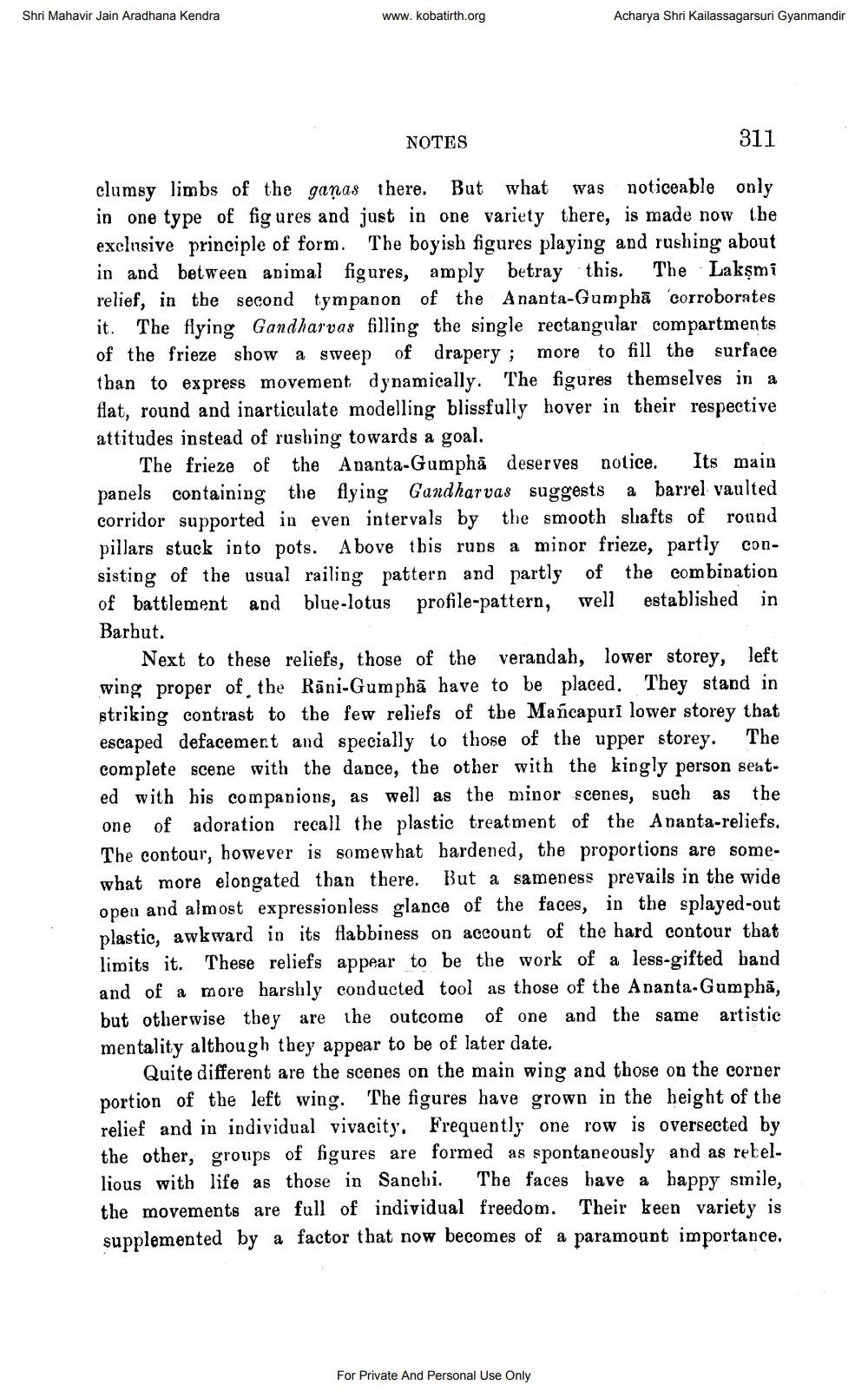________________
Shri Mahavir Jain Aradhana Kendra
www.kobatirth.org
Acharya Shri Kailassagarsuri Gyanmandir
NOTES
311
clumsy limbs of the gaņas there. But what was noticeable only in one type of figures and just in one variety there, is made now the exclusive principle of form. The boyish figures playing and rushing about in and between animal figures, amply betray this. The Lakşmi relief, in the second tympanon of the Ananta-Gumphā 'corroborates it. The flying Gandharvas filling the single rectangular compartments of the frieze show a sweep of drapery ; more to fill the surface than to express movement dynamically. The figures themselves in a flat, round and inarticulate modelling blissfully hover in their respective attitudes instead of rushing towards a goal.
The frieze of the Ananta-Gumphā deserves notice. Its main panels containing the flying Gandharvas suggests a barrel vaulted corridor supported in even intervals by the smooth shafts of round pillars stuck into pots. Above this runs a minor frieze, partly consisting of the usual railing pattern and partly of the combination of battlement and blue-lotus profile-pattern, well established in Barhut.
Next to these reliefs, those of the verandah, lower storey, left wing proper of the Rāni-Gumphā have to be placed. They stand in striking contrast to the few reliefs of the Mañcapuri lower storey that escaped defacement and specially to those of the upper storey. The complete scene with the dance, the other with the kingly person seat. ed with his companions, as well as the minor scenes, such as the one of adoration recall the plastic treatment of the Ananta-reliefs. The contour, however is somewhat hardened, the proportions are somewhat more elongated than there. But a sameness prevails in the wide open and almost expressionless glance of the faces, in the splayed-out plastic, awkward in its flabbiness on account of the hard contour that limits it. These reliefs appear to be the work of a less-gifted band and of a more harshly conducted tool as those of the Ananta-Gumpha, but otherwise they are the outcome of one and the same artistic mentality although they appear to be of later date.
Quite different are the scenes on the main wing and those on the corner portion of the left wing. The figures have grown in the height of the relief and in individual vivacity. Frequently one row is oversected by the other, groups of figures are formed as spontaneously and as rebellious with life as those in Sanchi. The faces have a happy smile, the movements are full of individual freedom. Their keen variety is supplemented by a factor that now becomes of a paramount importance.
For Private And Personal Use Only




